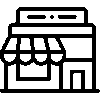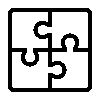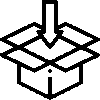- Products
- Platform
- Solutions
- Customers
- Support
- Pricing
 Website & Mobile & E-commerce
Website & Mobile & E-commerce
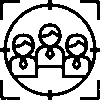 CRM
CRM
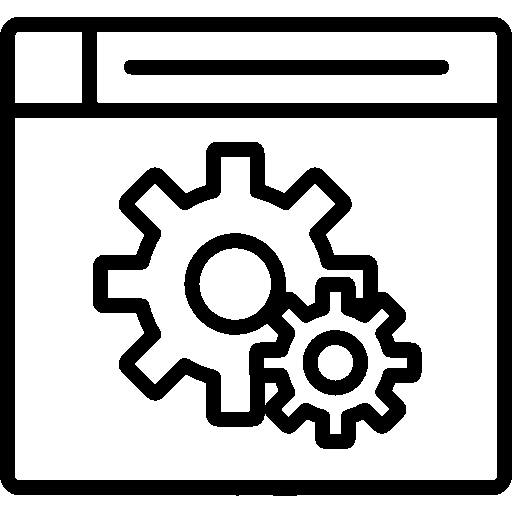 Operation & ERP
Operation & ERP
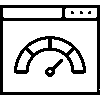 Productivity
Productivity
 Support
Support
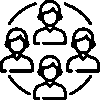 Community
Community
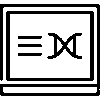 Learn
Learn
Application Support Point

You can follow the meeting agendas and meeting decisions with the Meetings application. You can define your meeting rooms. You can schedule periodic meetings and see your meeting calendar.
- Version History
- Application Features
- User Manual
- FAQ
- Community
Definition
The Meetings app is an app that allows users to plan, organize, and manage their meetings. This app offers functionality like calendar integration, reminders, and document sharing.
Aim
The purpose of the Meetings application is to make users' meeting processes more efficient and organized. This application digitizes the process from planning to execution of meetings, optimizing time management and enabling more effective communication between participants.
Key Benefits
- It allows users to easily schedule and track meeting times.
- Prevents meetings from being forgotten thanks to reminders and notifications.
- It optimizes meeting processes with meeting notes, task assignments and calendar integrations.
- Document and file sharing allows participants to easily access necessary information.
- It encourages teamwork and increases cooperation.
- It provides the opportunity to determine and follow the agenda of the meetings.
- Clarifies the roles and responsibilities of participants.
- Recording and analyzing meetings allows improvements to be made for future meetings.
- Provides statistics such as engagement rates and productivity metrics.
Entrance
It is the home screen of the Meetings application.

Meetings
Meetings are divided into five categories: Open Meetings, Closed Meetings, Cancelled Meetings, All Meetings, and Deleted Meetings.
If the stage feature is used, the defined stages are listed under the Open Meetings menu.
Example: Scheduled Meetings
Open Meetings
This is the screen where open meeting records are displayed.

On the Open Meetings screen, No, Meeting Information, Participants, Registration Date, Meeting Date, Update Date, Agenda, Decision information are listed in a table.
Scheduled Meetings
This is the screen where scheduled meeting records are displayed.

On the Scheduled Meetings screen, Meeting Number, Meeting Information, Participants, Registration Date, Meeting Date, Update Date, Agenda, Decision information are listed in a table.
Closed Meetings
This is the screen where closed meeting records are displayed.

On the Closed Meetings screen, Meeting Number, Meeting Information, Participants, Registration Date, Closing Date, Agenda, and Decision information are listed in a table.
Cancelled Meetings
This is the screen where cancelled meeting records are displayed.

On the Canceled Meetings screen, Meeting Number, Meeting Information, Participants, Registration Date, Cancellation Date, Agenda, and Decision information are listed in a table.
All Meetings
This is the screen where all meeting records are displayed.

On the All Meetings screen, Meeting Number, Meeting Information, Participants, Registration Date, Meeting Date, Update Date, Closing Date, Cancellation Date, Agenda, Decision information are listed in a table.
Deleted Meetings
This is the screen where deleted meeting records are displayed.

On the Deleted Meetings screen, Meeting Number, Meeting Information, Participants, Registration Date, Delete Date, Agenda, and Decision information are listed in a table.
Agendas
Meeting agendas are divided into three categories: Not Discussed, Discussed, and Cancelled.
Not discussed
Contains meeting agendas that were not discussed.

On the Not Discussed screen, Agenda No, Title, Responsible, Meeting Date, Creator, Organizer, Status information is listed in a table. The relevant meeting record is accessed under the title information.
Discussed
The agendas of the meetings discussed are included.

On the Discussed screen, Agenda No, Title, Responsible, Meeting Date, Creator, Organizer, Status information is listed in a table.
Cancelled
Cancelled agendas are included.

On the Canceled screen, Agenda No, Title, Responsible, Meeting Date, Creator, Organizer, Status information is listed in a table.
Decisions
The meeting decisions are divided into three groups: Not Realized, Realized, and Cancelled.Did not happen
Contains unrealized decisions.

On the Unrealized Decisions screen, No., Title, Responsible, Meeting Date, Creator, Organizer, Procurement Date, and Status information are listed in a table.
It happened
Contains decisions that have been made.

On the Realized screen, No., Title, Responsible, Meeting Date, Creator, Organizer, Procurement Date, and Status information are listed in a table.
Cancelled
Annulled decisions are included

On the Cancelled screen, No., Title, Responsible, Meeting Date, Creator, Organizer, Provision Date, and Status information are listed in a table.
Periodic Meetings
This is the screen where periodically recurring meetings are displayed.

On the periodic meetings screen, No, Title, Participants, Stage, Period Creator, Start Time, End Time information is listed in a table.
Meeting Rooms
This is the screen where meeting rooms are displayed. New meeting room registration can be made from the Settings menu.
Sample Meeting Room: Office Meeting Room
Meetings recorded in the relevant meeting room are listed.

On the Office Meeting Room screen, Number, Meeting Information, Participants, Registration Date, Agenda, Decision information are listed in a table.
Meeting Calendar
The Meeting Schedule is divided into two parts: My Own Records and All Users.
My Own Records
-Calendar

Meeting time tracking is easy by entering daily, weekly and monthly meeting dates on the calendar screen.
-Timeline

There is a daily timeline on the Timeline screen. Daily meeting tracking is easy.
-Agenda
- 
It is used by entering Date, Time and Event information on the Agenda screen.
All Users

Daily, Weekly and Monthly meeting dates of all users are listed.
Statistics
Statistics are divided into two: Personnel Statistics and Customer Statistics.
Staff Statistics
This is the screen where the statistics of the personnel are displayed.

On the Personnel Statistics screen, Personnel, Open , Closed , Total information is listed in a table. If the stage feature is used, the number of meeting registrations in the relevant stage is shown.
Customer Statistics

In the Customer Statistics screen, Customer Information, Open, Closed, Total information is listed in a table. If the stage feature is used, the number of meeting registrations in the relevant stage is shown.
General Information
This is the screen where the meeting record is created.

To add a new meeting, select the Customer. Enter the Meeting Number, Subject, Meeting Purpose, Urgency, Meeting Date, Meeting Place, and Description information. If you want to create an agenda and a decision, mark it. After all the operations are completed, click the Save button to save.
Personal Settings
Kişisel Ayarlar, kullanıcının bir uygulama üzerindeki deneyimini özelleştirmesine olanak tanır. Kullanıcının kendi tercihlerine göre çeşitli ayarları yapılandırabilmesini sağlar.

Toplantılar uygulamasını özelleştirmek için Listeleme Ayarları ve Sütunlar ayarları yapılır.
Listeleme Ayarları
Detay Gösterim Yöntemi; Sekme veya Popup seçilir.
Varsayılan Takvim Filtresi; Günlük, Haftalık, Aylık, Senelik veya Tümü olarak seçilir.
Varsayılan Tarih Filtresi; Kayıt Tarihi veya Güncelleme Tarihi seçilir.
Sayfalamada Kayıt Sayısı; 25, 50, 100, 250 veya 500 olarak seçilir.
Sütunlar
No
Başlık
Katılımcılar
Aşama / Durum
Kayıt Tarihi
Toplantı Tarihi
Güncelleme Tarihi
Kapatma Tarihi
İptal Tarihi
Silinme Tarihi
Gündem Karar
Yukarıda listenenen sütun maddeleri tercihe göre seçilerek kaydedilir.
Filtering Settings
Filtreleme ayarları, uygulamada belirli kriterlere göre verileri listelemek için kullanılır. Kullanıcıya yalnızca ilgili veya uygun verileri sunmaya yardımcı olur.

Filtreleme ayarları ekranında Tarih Aralığı, Toplantı Odası, Toplantı Amacı, Pozisyon Türü, Personel Adı, Aşama, Aciliyet, alanları seçilerek filtreleme yapılır.
Sıralama; Toplantı Numarası, Konu, Aşama,Toplantı Tarihi seçilerek sıralama yapılır.
Gündemler menüsünde farklı filtreleme alanları mevcuttur.

Filtreleme ayarları ekranında Tarih Aralığı, Pozisyon Türü, Personel,İlgi Durumu, Gerçekleşme Durumu, Toplantı Adı alanları seçilerek filtreleme yapılır.
Sıralama; ID, Konu, Tarih, Sorumlu alanlar seçilerek sıralama yapılır.
Summary
Contains summary information of the meeting record.

The Summary screen includes Meeting information, Participants and Basic Components information. From the Actions menu, Close Recording, Cancel Recording, Delete Recording, and E-Mail Notification operations can be performed. If a stage is used, a stage change can be made.
Edit
This is the screen where the meeting record is edited.

On the Edit screen, Customer Information, Subject, Meeting Purpose, Start Date, Periodic Meeting, Meeting Location, Description information is edited. After all operations are completed, it is saved by pressing the Save button.
Participants
This is the screen where the participants are displayed.

Meeting participants are listed. Participants can be added from the Staff and Customers menu.
Agendas
This is the screen where agenda items are displayed.

On the Agendas screen, No, Title, Participants, The creator, Organized by, Status information is listed in tabular form.
The agenda is added by pressing the Add New button.

To add an agenda, enter the Title, Discussion Status, and Description information. It is associated with the meeting participant. After all operations are completed, it is saved by pressing the Save button.
It is edited by clicking on the edit bar of the added Agenda record.
-General Information

The general information screen includes Title, Discussion Status, and Description information.
-Decision Making

Agenda is selected to create a decision. Undecided agendas can be shown. Title, Realization Status, Deadline, Description information is entered. It is associated with the meeting participant. After all transactions are completed, it is saved by pressing the Save button.
Decisions
This is the screen where meeting decisions are displayed.

On the Decisions screen, No , Title , Task , Participants , Creator , Organizer , Deadline , Status information are listed in a table.
The decision is added by pressing the Add New button.

Agenda is selected to add a new decision. Undecided agendas can be shown. Title, Realization Status, Deadline, Description information is entered. It is associated with the meeting participant. After all transactions are completed, it is saved by pressing the Save button. The edit bar is pressed to edit the added decision.
The Edit screen includes General Information and Task creation.
Create Task

To add a new task, enter the Task Name, Transaction Date, Related Persons, and Task Description information. After all operations are completed, click the Save button to save.
Tasks
This is the screen where tasks are displayed.

On the Tasks screen, Index No., Task Description, Related Persons, Stage, Progress, Duration, Link, Record Date, Process Date information is listed in a table. Record Date and Basic Components can be filtered.
A task is added by clicking the Add New Task button.

To add a new task, Task Name Urgency, Completion Percentage, Group information is entered. Automatic Scheduling Checklist, Task Matrix (List x Checklist) can be used, Process Date can be defined. Task description can be entered. After all processes are completed, it is saved by pressing the Save button.
General Settings
Settings are customized by selecting the settings to be used according to the company's preference from the General Settings menu.

The color of the application is saved by selecting the preferred color.
Meeting stages are determined using the Stage Feature.
Communication becomes easier by using the e-mail sending feature.
Agenda Explanations can be displayed in the Meeting Summary. (If it is closed, only the agenda title is displayed.)
The Explanations of the Decision can be displayed in the Meeting Summary. (If it is closed, only the decision title is displayed.)
Stage Definitions
Definitions are created for the meeting stages. These stage definitions make it easier to follow the meeting by showing which stage it is at.

The Phase Definitions screen lists the Color, Phase Name, and properties.
A stage is added by pressing the Add New Stage button.

To add a stage definition, Stage Information and Stage Options information is entered. After all operations are completed, the Save button is pressed to save. The stage is edited by clicking on the added stage.
-General Information

In the General Information screen, Stage Name, Description, Order and Stage Options are edited.
-Stage Color

A color representing the stage is selected. The color representing the stage allows records to be easily separated in the lists according to their stages and status.
Authorized Users

The authorized users' Name and Surname information is listed on the authorized users screen. By clicking on the authorized user, stage authorizations are edited.
-Editing Stage Authorizations

Authorized users are given authority to edit stage authorizations at each stage. After all operations are completed, they are saved by pressing the Save button.
Meeting Rooms

On the Meeting Rooms screen, Order, Name, Capacity, Status information is listed in a table.
The room is entered by pressing the Add New button.

To add a meeting room, enter the Title, Description, Capacity, Status, and Sorting information. After all operations are completed, click the Save button to save.
Meeting Purpose
This is the screen that shows the purpose of the meeting.

On the meeting purpose screen, Order, Title, Edit information is listed in a table.
The meeting purpose is added by clicking the Add New button.

Header information is entered. After all operations are completed, save it by pressing the Save button.
Calendar Settings
Time management is done using calendar integration in the Meetings application.

Use Calendar integration in this app: Allows meeting recordings to appear in the calendar app.
In this application, "Add to Calendar" should be selected: When adding a meeting record, it allows the records to be added to the calendar.
E-Mail Form Settings
On the E-mail Form Settings screen, the Mail Form, Form Key, and Mail Account information are listed in a table.

Editing is done by clicking on your email.

The general information of the E-mail Form is edited. After all the operations are completed, it is saved by pressing the Save button.
Automatic Numbering
Automatic numbering ensures that each new record is automatically assigned when adding a meeting record.

Fill in the Prefix and Suffix fields as desired or leave them blank.
Give a starting value to the Auto-Increment Number field. For example, if you give 1000, the following numbers will go as 1000, 1001, 1002...
When a value is entered, a preview is displayed on the right for information purposes.
Authorized Users
On the Authorized Users screen, users are given the required authorizations and saved.

Questions
Ask questions and get answers from other Entranet users.














